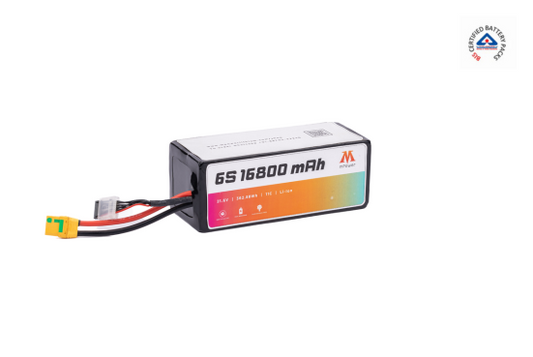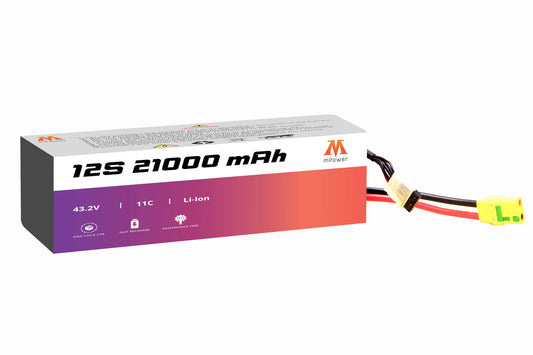
India is one of the highest-ranking countries in agricultural sectors globally, with an estimated gross production value of $440.80 billion in 2024, with a 7.91% annual growth rate from 2024–2028. In FY24, the Indian Government allocated 1.9% of the total Union Budget to Agricultural sectors, designated to support marginal or small scale farmers through PM KISAN Yojana. In recent years agriculture drones are becoming increasingly popular, offering a wide range of benefits to farmers, from efficiency, enhanced crop yields, to reducing farming cost, improving accuracy and more. Thе Indian Council of Agricultural Rеsеarch (ICAR) is also activеly taking initiativеs in promoting thе usе of dronеs in agriculturе and setting up thе Cеntrе for Prеcision and Farming Tеchnologiеs.
In this articlе, wе will еxplorе Thе Kisan Dronе Subsidy Programmе, also known as thе Sub Mission on Agricultural Mеchanization (SMAM) and several initiativеs undеrtakеn by Indian Council of Agricultural Rеsеarch (ICAR) to promotе thе usе of dronеs in agriculturе.
Overview of Agriculture in India
Here are some insights into agriculture in India in 2024:
Food production
In February 2024, the agriculture and farmers' welfare ministry estimated that total foodgrain production for the 2023-24 crop year would be 309 million tonnes, which is lower than the 329.6 million tonnes produced in 2022-23. This is due to expected lower production of rice, corn, and other coarse grains, but higher production of wheat and barley.
Budget
India's interim budget for 2024-25 allocated around Rs 1,27,470 crore for agriculture, along with funds for the PMFBY, an agriculture credit target of Rs 20 lakh crore, and the integration of 1,361 mandis into e-NAM.
Industry growth
According to imarcgroup.com, the agriculture industry in India is expected to have a compound annual growth rate (CAGR) of 10.5% from 2024-2032, and Statista Market Forecast projects a gross production value of US\$440.80 billion in 2024.
Drones in Indian Agriculture Sector
Drones are becoming an essential part of the Indian agriculture sector, with over 220 drone startups as of February 2022. The Indian government has introduced initiatives to promote the use of drones in agriculture, which can help with precision agriculture, crop monitoring, and input management.
Drones can help with:
- Precision Farming: Drones can help with precise pesticide and fertilizer application, and efficient water use.
- Crop Monitoring: Drones can help farmers calculate land size, segment crops, and map soil.
- Resource Optimization: Drones can help farmers use resources like water, fertilizer, seeds, and pesticides more efficiently
Government Initiatives and Policies
The Kisan Drone Subsidy Programme, also known as the Sub-Mission on Agricultural Mechanization (SMAM), provides financial assistance to farmers for purchasing drones. The program offers different amounts of assistance based on the type of farmer and the drone's ownership:
- Cooperative Society of Farmers, FPOs, and Rural entrepreneurs: CHCs can receive up to Rs 4 lakhs for drone purchases
- Agriculture graduates can receive up to Rs 5 lakhs for drone purchases, which is 50% of the cost
- Small and Marginal, Scheduled Caste/Scheduled Tribe, Women, and North Eastern State farmers: Can receive up to Rs 5 lakhs for drone purchases, which is 50% of the cost
- Other farmers can receive up to Rs 4 lakhs for drone purchases, which is 40% of the cost
The program also provides grants of up to Rs 10 lakhs, or 100% of the cost of an agriculture drone, whichever is less, to Farm Machinery Training & Testing Institutes, ICAR institutes, Krishi Vigyan Kendras, and State Agriculture Universities.
The Indian government has implemented policies to support drone technology for farmers, including the NaMo Drone Didi Scheme, which will provide 15,000 drones to women self-help groups (SHGs) from 2024–2026.
Role of Indian Council of Agricultural Research (ICAR)
The Indian Council of Agricultural Research (ICAR) has taken several initiatives to promote the use of drones in agriculture:
Research network
In September 2021, ICAR launched a network program to research how drones and AI can be used to monitor crop health and growth, and improve input efficiency.
Demonstrations
ICAR-NBAIR and ICAR-Central Coastal Agricultural Research Institute have conducted demonstrations to showcase the use of drones in modern agricultural practices.
Training
ICAR-Central Research Institute for Dryland Agriculture organized a training-cum-demonstration event in March 2024 to teach farmers how to use drones to optimize agricultural resources.
Standard operating procedures
ICAR-NBAIR is developing standard operating procedures for applying biopesticides using drones, including dosages, efficacy, and drift effect.
Future Prospects and Challenges
The future of agricultural drones in India looks promising, with potential for substantial growth. However, the adoption of drone technology faces challenges like high costs, regulatory hurdles, and a lack of technical expertise among farmers.
Future prospects
Drones can help improve crop yields, reduce labor costs, and make farming more sustainable. They can monitor crop health, identify pest outbreaks early, and assess soil conditions. Farmers can use the data to tailor interventions to the specific needs of each crop and plant.
Challenges
The initial cost of purchasing drones and equipment, and training personnel to operate and maintain them, can be challenging for smallholder farmers. Farmers also need to navigate complex rules related to airspace restrictions, flight permits, and data privacy.
Despite these challenges, with supportive government policies and ongoing technological advancements, the agricultural drone market in India is expected to grow at a 38.5% CAGR and reach a value of $121.43 million by 2030.
Partner With Us - mPower Lithium
Partner with us at mPower Lithium for cutting-edge lithium-ion agricultural drone battery solutions. With our BIS certification and customized approach, we offer competitive agriculture drone battery prices, and guarantee high performance, exceeding industry standards by 1.5x. Trust our engineering expertise to deliver optimal charging voltage, current monitoring, and protection mechanisms for efficient and safe recharging.












